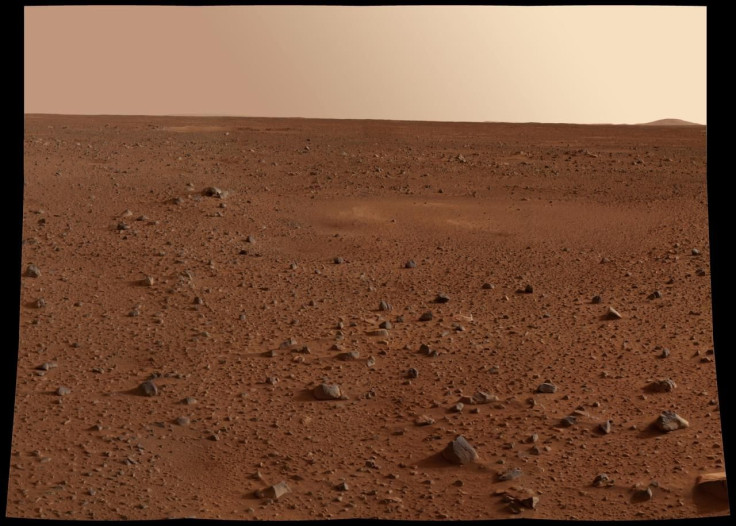NASA Mars Methane Mystery Is Gone: There's No Life On The Red Planet

The methane mystery of Mars continues as last week’s bizarre spike went down to less than one part per billion, bringing with it any hope that could prove there’s life on the Red Planet.
According to The New York Times, NASA’s Curiosity rover was able to detect one of the highest levels of methane gas in the Martian atmosphere since 2013 at 21 parts per billion. Methane gas plays a crucial role in the research of life in Planet Mars as the gas is often associated with organic microbes often found underground on Earth.
“A plume came and a plume went,” Paul Mahaffy, from NASA’s Goddard Space Flight Center, said during a presentation in Bellevue, Washington.
“The methane mystery continues. We’re more motivated than ever to keep measuring and put our brains together to figure out how methane behaves in the Martian atmosphere,” Ashwin Vasavada said in a statement from NASA’s Jet Propulsion Laboratory (JPL) which handles Curiosity.
After detecting the high levels of methane gas last week, the JPL team in Pasadena changed the Curiosity’s weekend plans to repeat the experiment which measured the methane gas in the Martian atmosphere. However, data from the second reading shows that the gas has already dropped down to normal levels and is almost non-existent in the area.
Although a big let down in current studies, the sudden disappearance of methane gas in the Gale Crater area could also mean a few exciting scientific possibilities. First, it could mean that a major geological event on planet Mars has occurred which led to the release of the gas.
Next, it could explain that there was indeed organic life on Mars which lived billions of years ago and that the methane gas it produced were simply trapped beneath the planet’s rocks. The methane gas could have easily dissipated because of its reaction to solar radiation. With Mars’ weak atmosphere, it for the gas to react with other chemicals on the planet.
Methane on Planet Mars was first believed to have been detected by the European Space Angecy’s Mars Express. The levels, however, were so low that some thought it was a fluke. It wasn't until the arrival of NASA’s Curiosity that scientists were able to detect that there is indeed methane gas on Mars.
In 2013, NASA was able to record a sudden spike of the gas at seven parts in one billion before it once more disappeared. It wasn’t until last week’s data was NASA able to determine significant levels of methane in the atmosphere.
© Copyright IBTimes 2024. All rights reserved.





















